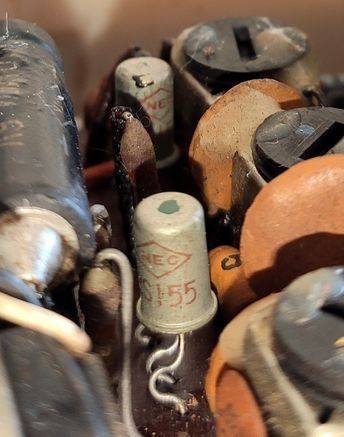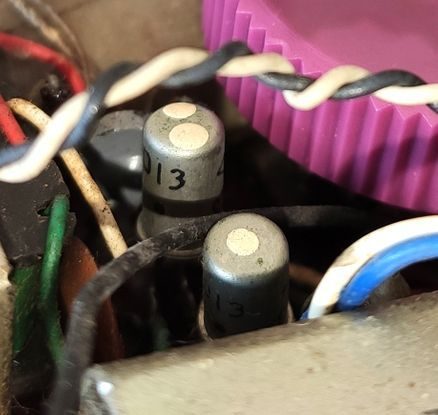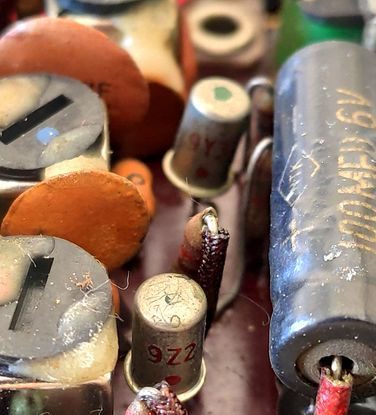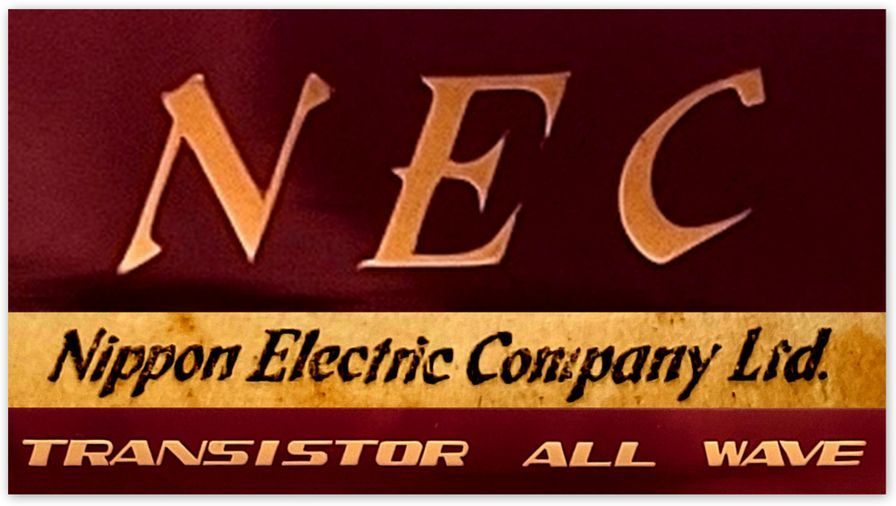
This is the unicorn of radios and it is quite possibly the cutest radio ever created! Made in Japan circa 1959, it was surely designed by a mad genius at electronics giant Nippon Electric Company Ltd 日本電気株式会社 (NEC).
If ‘Robby the Robot’ and ‘My Little Pony’ had a lovechild then the NT-79A would almost certainly be the result! This unusual little radio has tonnes of charisma; it’s oddball angles and camber seem designed to make you want to reach out and pet it — it’s equally strange and cool.
The NT-79A is not quite square or rectangular; it has shoulders that curve in at the top, softening its form. And whilst you’re admiring those shoulders check out the quirky corrugated tuning dial that droops down to the right, above the reverse painted face. It proudly proclaims ‘Transistor All Wave’ when in fact it’s a two band radio; BC/SW only. Both bands can be seen on the dial; the broadcast band in gold font and the shortwave band in cornflower blue.
The sharp pinstripe metal speaker grill is partitioned from the plastic body at a 60 degree angle. It has a smart ‘old mauve’ and gold cloisonne badge on the front in the shape of an inverted V. The slick telescopic antenna rises like a unicorn horn from the center of the case and it will keep rising up to approximately 24 inches. The few surviving examples of this radio that I’ve seen are sometimes missing the tip of the antenna, which must be very annoying, and rather like missing your nose.
The overall color scheme is unique; ‘old mauve’ reverse painted face, tuning and volume dials, cloisonne badge and antenna tip, dial marker and bookend markings. It has gold highlights on the tuning dial, NEC logo and badge. I’ve seen these radios in three color combinations; either pink or ivory cabinet, both with a black back and ‘old mauve’ highlights and there is also a model with an ivory cabinet, red back and red face, red dials and black and red font etc. Thanks to fellow collector Shaun Poole for his input into this.
On the back of this radio, model number NT-79 (not 79A) is molded into the cabinet along with ‘Nippon Electric Company Ltd’. Model number NT-79A can be found on the manufacturers label inside the back cover. This is a peculiarity common to this radio. I have yet to see an example with NT-79 on both the back and the manufacturers label.
It measures 134 x 95 x 43 mm / 5.3 x 3.7 x 1.7 inch and it’s heavy for it’s size weighing in at 516 grams / 1.13 pounds.
This radio came to me from Kagoshima on the island of Kyushu, Japan in May 2020. The NT-79A originally sold for 11300 yen which, accounting for different rates of inflation, was about $31USD in 1959. This model was probably only available to Japanese consumers for the following reasons; it is quite scarce and generally speaking, if it were sold worldwide there would probably be more of them around today. I’ve only seen Japanese language catalogues for this model and have not been able to find any vintage advertisements for it. I’ve only seen the NT-79A with a shortwave frequency range of 3.9 — 12 MHz and in my experience, S/W radios exported from Japan were available in different frequency ranges, dependent upon what countries or regions they were sold in. And the biggest argument for it not being an export model is that it does not have conelrad markings on the dial indicating that it was never sold in the USA, Canada, Cuba or Mexico. Of course I could be wrong (but I doubt it).
To the right is a page from the NEC NT-79 catalogue.
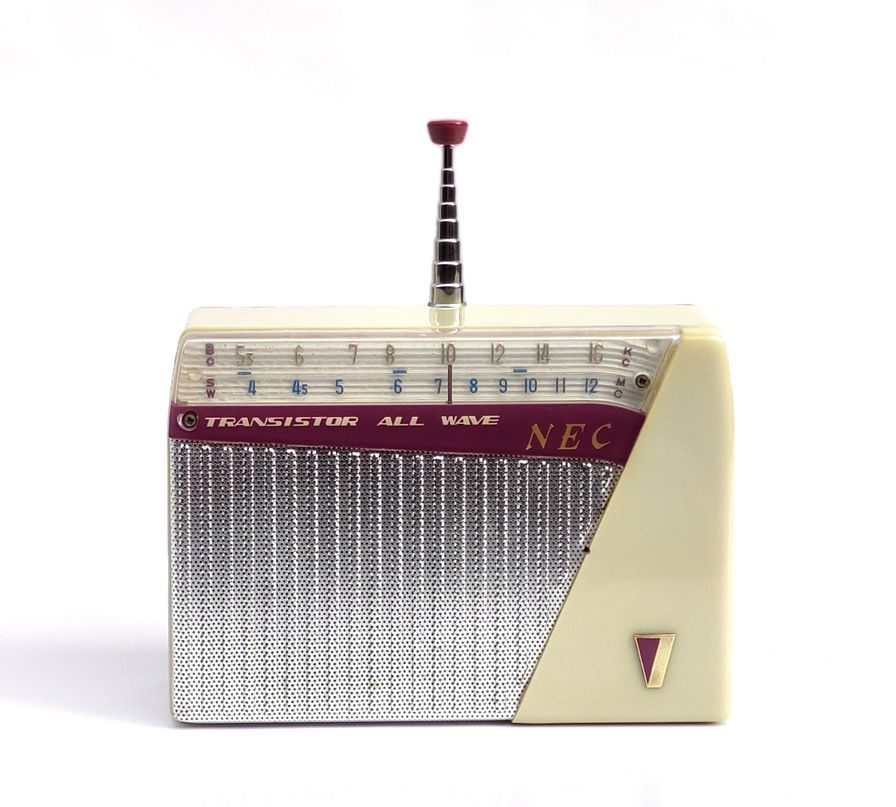
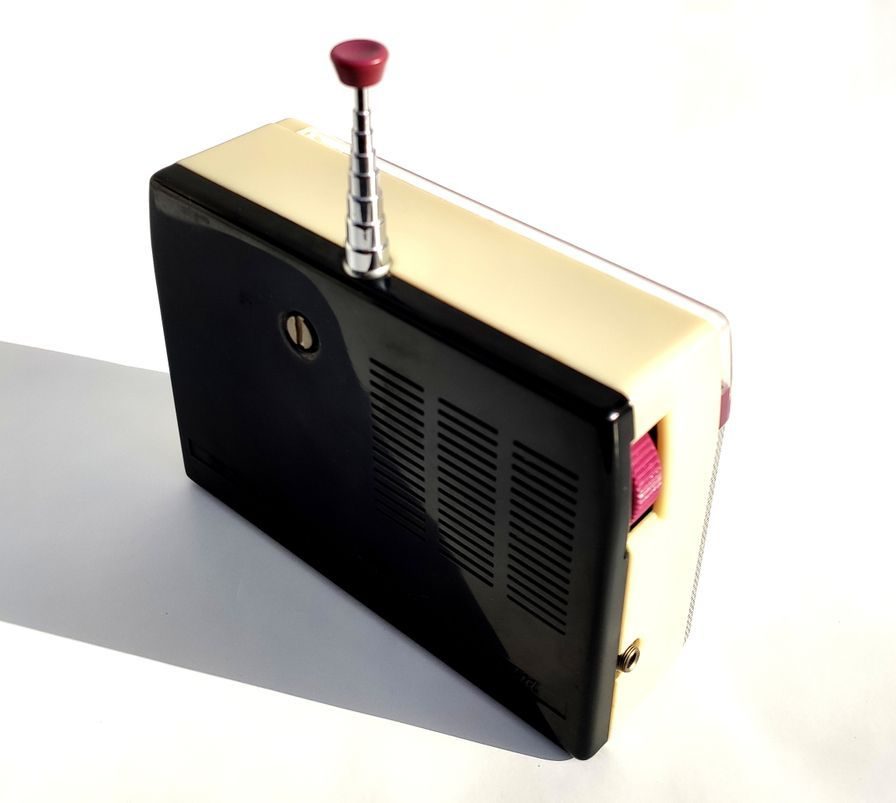

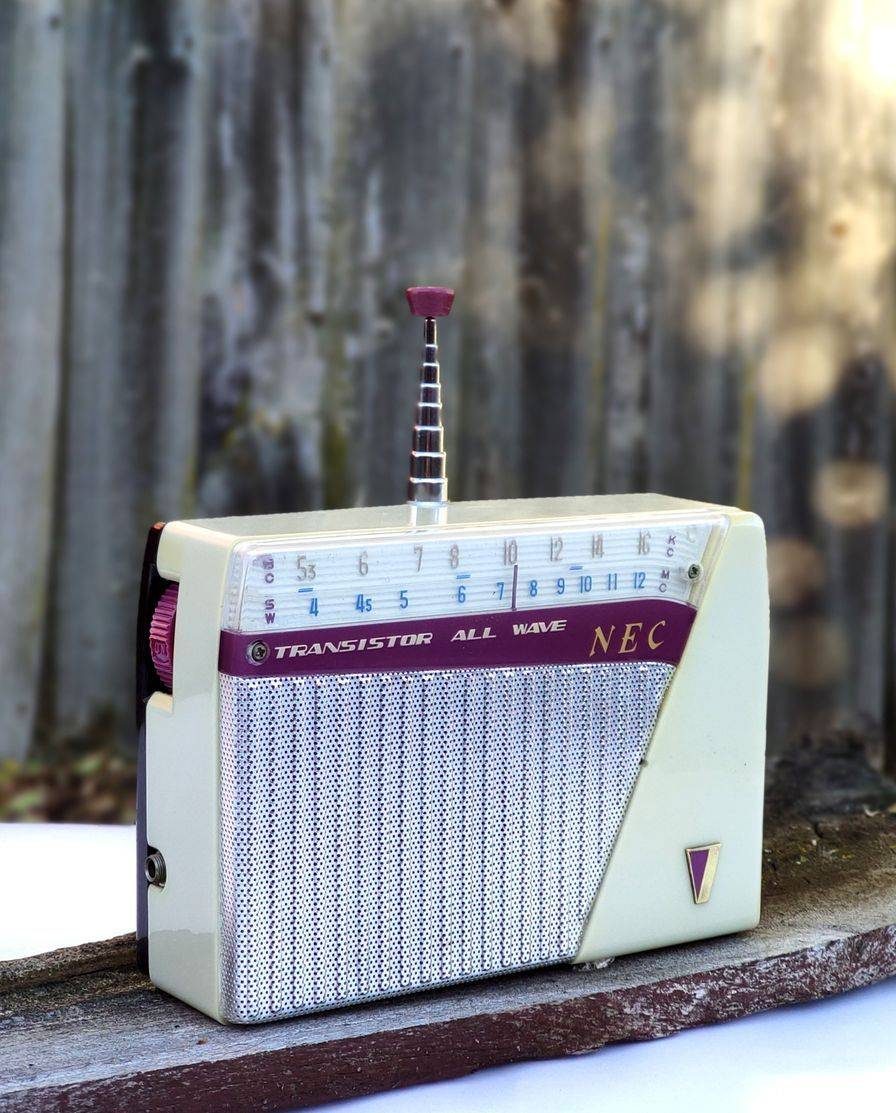
 Nippon Electric Company Ltd (NEC) was formed in 1899 as a joint venture between Kunihiko Iwadare and U.S. firm Western Electric. A lot of names for the new company were considered including «Tokyo Electric», «Toyo Electric» and «Toho Electric». However, it was Chief Engineer Takeshiro Maeda’s suggestion of «Nippon Electric» that was adopted and the newly established firm promoted themselves as «the electric company that represents Japan». To the right is NEC founder Kunihiko Iwadare, one of the few Japanese to have worked with Thomas Edison. NEC started out manufacturing telephones and switches and in 1924 established its radio communications business. NEC imported equipment from Western Electric for Radio Tokyo, which started broadcasting in 1925. The expansion of radio broadcasting into Osaka and Nagoya marked the emergence of radio as an Industry in Japan. In 1924 NEC established a radio research facility and in 1925 they started developing electron tubes. By 1930 they had manufactured their first 500W radio transmitter. World War II was described by the company as being the darkest days of its history. It’s production plants were either placed under military control, destroyed or heavily damaged by bombing. NEC was further hampered by the ‘Enemy Property Control Law’; NEC shares owned by a major Western Electric affiliate were seized by the government. At the end of the war NEC’s production had been substantially reduced by damage to its facilities, and by material and personnel shortages. Remarkably, NEC quickly rebounded. After the war, production facilities were slowly returned to civilian use. In 1950 NEC began transistor research and development. In March 1957 NEC released its first two transistor radios simultaneously; models NT-6A and NT-7H. In September 1958, NEC built their first fully transistorized computer, the NEAC-2201, with parts made solely in Japan. And in 1959 they created the worlds cutest radio, the NT-79A! NEC has since established themselves as a global electronics giant with a rich and historic past.
Nippon Electric Company Ltd (NEC) was formed in 1899 as a joint venture between Kunihiko Iwadare and U.S. firm Western Electric. A lot of names for the new company were considered including «Tokyo Electric», «Toyo Electric» and «Toho Electric». However, it was Chief Engineer Takeshiro Maeda’s suggestion of «Nippon Electric» that was adopted and the newly established firm promoted themselves as «the electric company that represents Japan». To the right is NEC founder Kunihiko Iwadare, one of the few Japanese to have worked with Thomas Edison. NEC started out manufacturing telephones and switches and in 1924 established its radio communications business. NEC imported equipment from Western Electric for Radio Tokyo, which started broadcasting in 1925. The expansion of radio broadcasting into Osaka and Nagoya marked the emergence of radio as an Industry in Japan. In 1924 NEC established a radio research facility and in 1925 they started developing electron tubes. By 1930 they had manufactured their first 500W radio transmitter. World War II was described by the company as being the darkest days of its history. It’s production plants were either placed under military control, destroyed or heavily damaged by bombing. NEC was further hampered by the ‘Enemy Property Control Law’; NEC shares owned by a major Western Electric affiliate were seized by the government. At the end of the war NEC’s production had been substantially reduced by damage to its facilities, and by material and personnel shortages. Remarkably, NEC quickly rebounded. After the war, production facilities were slowly returned to civilian use. In 1950 NEC began transistor research and development. In March 1957 NEC released its first two transistor radios simultaneously; models NT-6A and NT-7H. In September 1958, NEC built their first fully transistorized computer, the NEAC-2201, with parts made solely in Japan. And in 1959 they created the worlds cutest radio, the NT-79A! NEC has since established themselves as a global electronics giant with a rich and historic past.
Below is another page from the original NT-79 catalogue. It depicts happy people biking, watching baseball, break dancing (break dancing?!?) all whilst using their adorable little NT-79A.

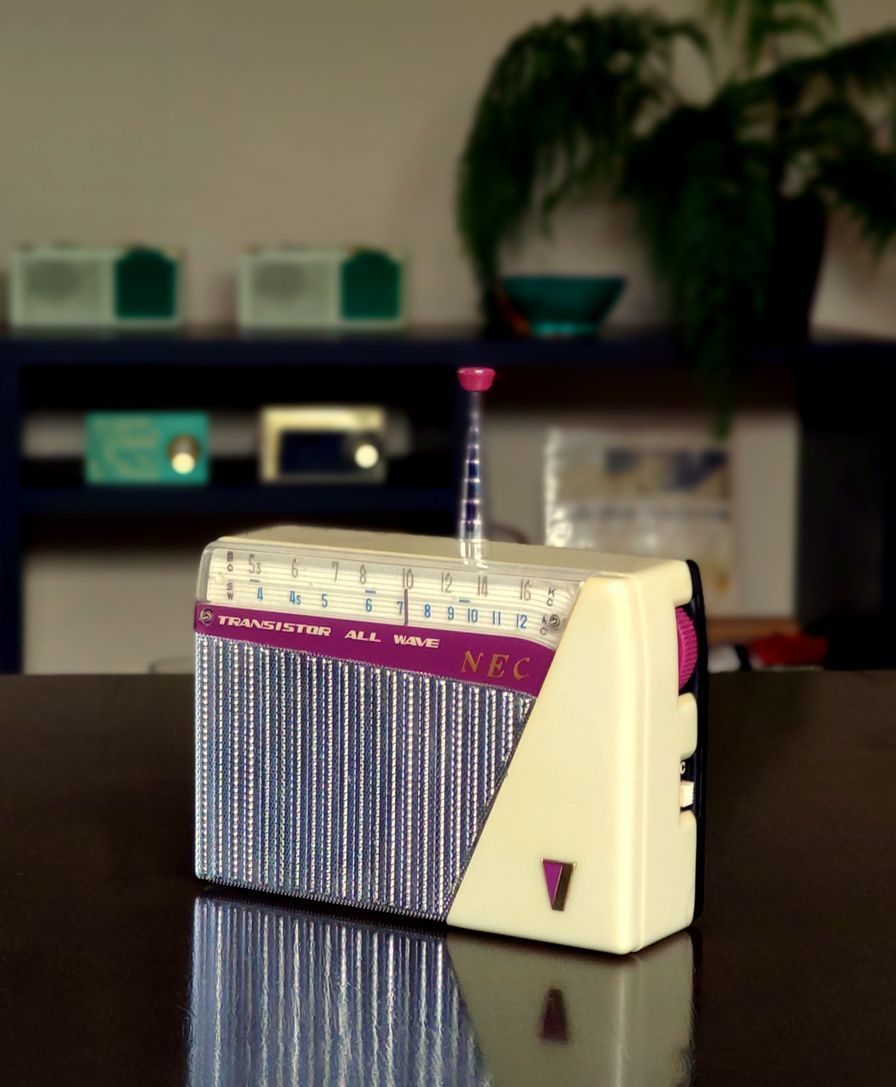
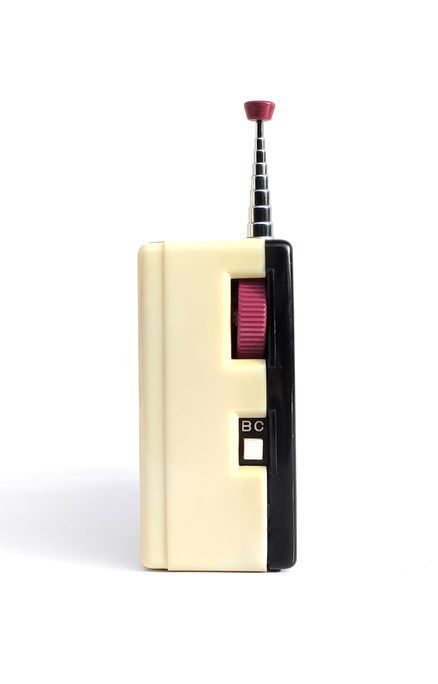

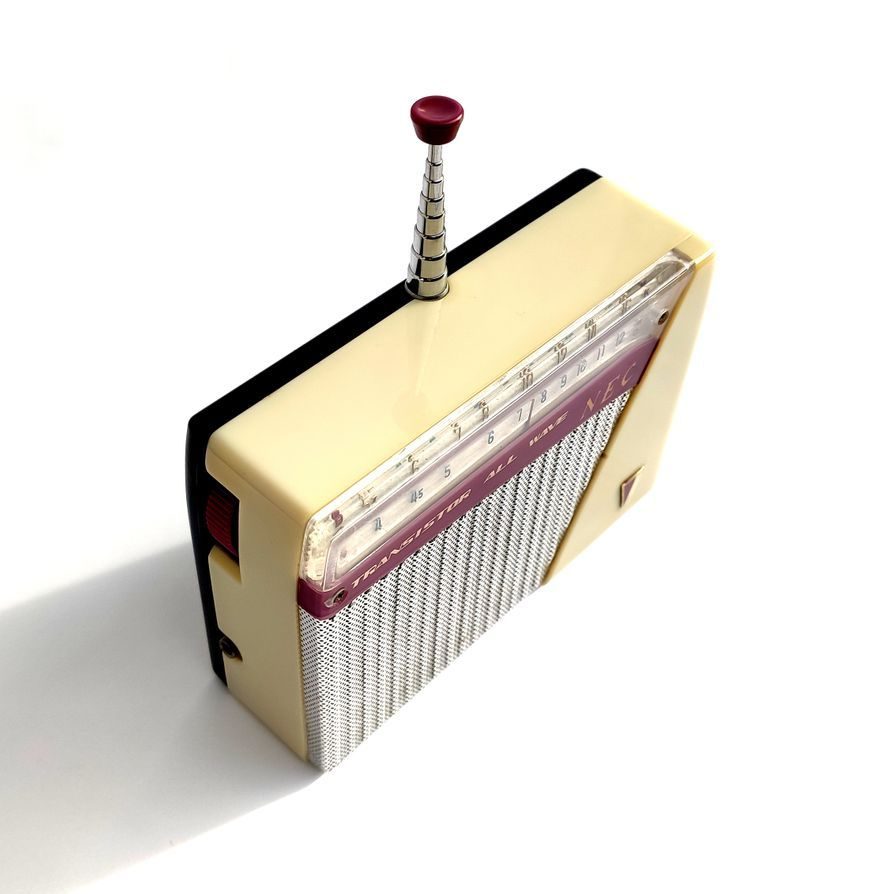

Inside the back of the NT-79A we can see the manufacturers label and schematic. The serial number is conspicuously absent. It’s powered by four AA batteries and uses in-house NEC transistors. The earliest examples of this radio use old style oval transistors as per the schematic diagram.
Be careful when opening the back of the radio. There is a white wire that runs from the rod antenna and plugs into the base of the telescopic antenna. It can be unplugged to allow better access to the internal components.
If you do decide to take the chassis out of the cabinet (as I did in order to sand it) then you will see that the tuning dial does not use string. It uses a plastic strip that has the dial selector attached to the end and runs along the length of the tuning dial and is hidden from view. Where it enters the cabinet it slots into a large wheel. You need to remove this plastic strip from the wheel in order to free the chassis (it slides sideways out of a groove on the wheel). I would recommend that after removing the plastic strip from the wheel that you tape it in place inside the cabinet. If it comes fully out of the clear tuning dial area then it can be difficult to replace it correctly.
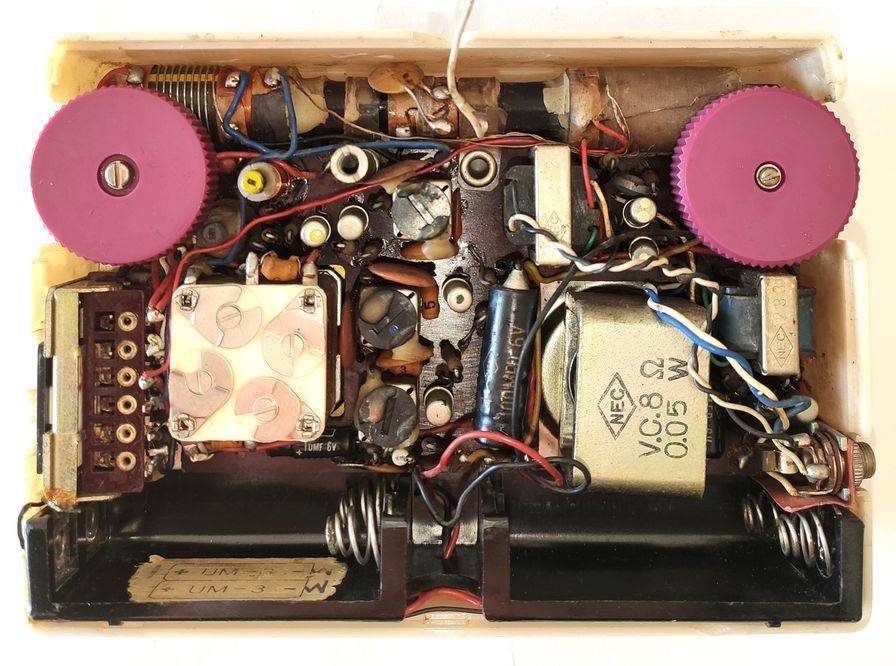
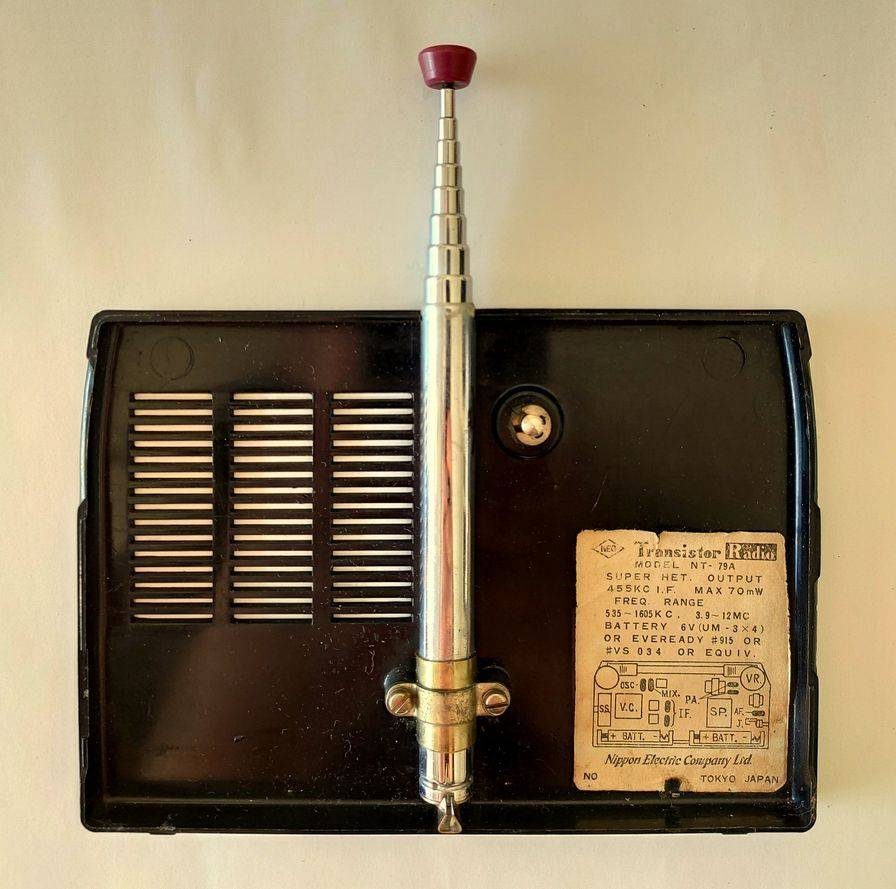
Below you can see the wire that slots into the base of the antenna and the NEC transistors.

